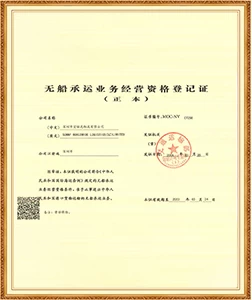Freight prices are falling at an accelerated pace! Market trends have changed
Sunny Worldwide LogisticsIt is a logistics company with more than 20 years of transportation experience, specializing in markets such as Europe, the United States, Canada, Australia, and Southeast Asia. It is more of a cargo owner than a cargo owner~

In the past week, container spot freight rates between Asia and Europe have shown a steady downward trend, especially on the Asia-North Europe and Asia-Mediterranean routes, which have seen significant double-digit declines.
According to data from Drewry's World Container Index (WCI), the freight rate on the Shanghai-Rotterdam route fell by nearly US,000/FEU this week, a weekly drop of up to 14%. At the same time, Xeneta's XSI index also reflected that the freight rate on the Asia-Europe route fell by 10% to US,843/FEU. Similarly, the spot freight rate of WCI's Shanghai to Genoa route fell by 12% to US,842/FEU, and the freight rate of the Baltic Freight Index's Asia to Mediterranean route also fell by 12% to US,274/FEU.
People in the European freight forwarding industry pointed out that the market direction has changed and spot rates are falling rapidly. The core challenge facing shipping lines is slowing demand. Although capacity has been added through the Cape of Good Hope to cope with the growing demand on the Asia-Europe route, demand appears to have peaked and the high freight periods of May and June are behind them.
Container trade statistics further confirm this. July data showed that monthly freight volumes from the Far East to Europe fell, with a decrease of nearly 200,000 TEUs from June, from 1.75 million TEUs in June to 1.75 million TEUs in July. 1.58 million TEU, a decrease of 0.5%. In particular, freight volume from North Asia to Northern Europe fell by 7.6% month-on-month and 14.2% year-on-year, while freight volume from China to Northern Europe also fell by 3.9% month-on-month, although it still increased by 7.9% year-on-year.
Forwarders expect August data to show a larger month-on-month decline and a weaker demand outlook in September. With China's Golden Week approaching, empty ship activity is expected to increase, which may be the only strategy for shipping companies to slow down the decline in freight rates.
In response to market changes, shipping companies began to take action. For example, THE alliance member Hapag-Lloyd announced that it will cancel 5 Asia-North Europe voyages in the 40th to 42nd week, and cancel 3 Asia-Mediterranean voyages in the 40th to 41st week.
Analysts point out that longer transit times via the Cape of Good Hope require peak season cargo to be loaded earlier, but the current peak season is coming to an end, exacerbating the imbalance between supply and demand in the market. Freightos chief analyst Judah Levine said that taking into account the extension of transportation time and the impact of China's Golden Week, the cargo arrival window in Northern Europe and the Mediterranean is closing, which has alleviated demand pressure to a certain extent. However, although freight rates have declined from their peak, they are still well above 2019 levels.
In addition, spot freight rates on the trans-Pacific route also showed weakness, although the decline was relatively small. WCI freight rates on the Shanghai to Los Angeles route fell by 3%, and the XSI Transpacific Index also fell by 3%. The trade situation from Asia to the east coast of North America was similar, with WCI prices on the Shanghai to New York route falling by 2%. Rates on the Asia-to-North America route have continued to slide despite the potential threat of strikes by longshoremen on the U.S. East Coast and Gulf Coast and analysts' forecasts of a surge in West Coast port volumes and spot rates.
There is news that a new price war may break out on the eastbound trans-Pacific route, and many non-alliance shipping companies are slashing prices to increase utilization.




















